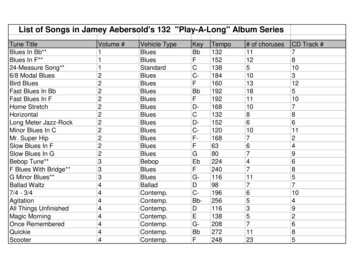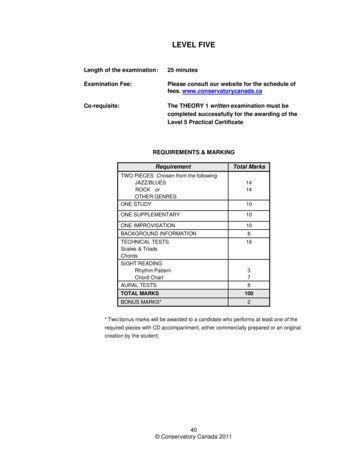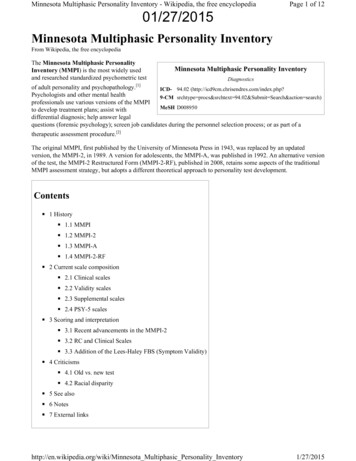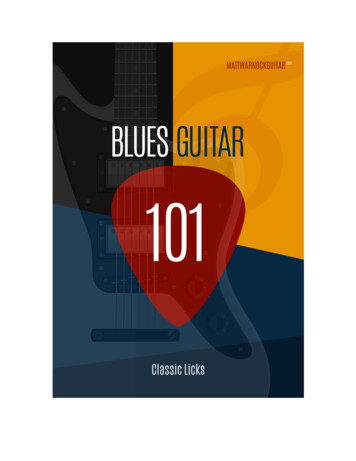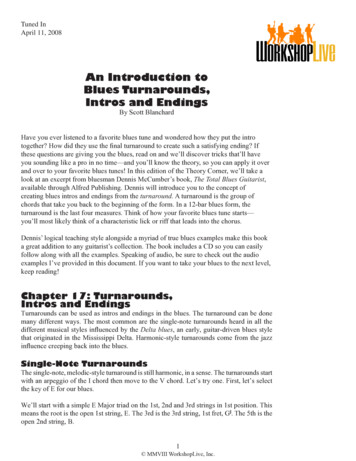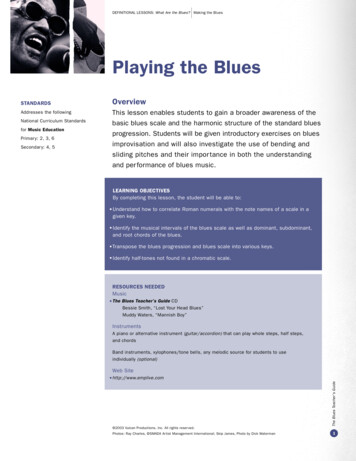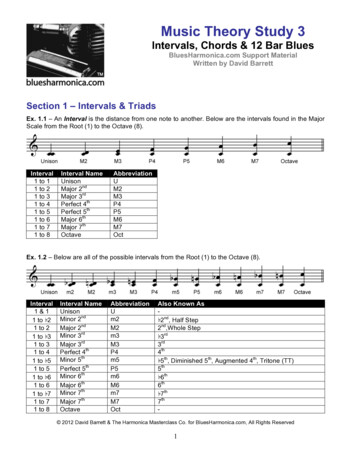
Transcription
Chapter Two: Blues ScalesBlues is an irresistible tonality for a guitar player. Often new players are drawn to the instrumentbecause of a desire to play the blues. To play the blues is a fascinating undertaking because it canbe both simplistic and yet intangibly tricky to master. The blues scale is fairly simple to play(particularly if you have mastered the minor pentatonic), yet it is remarkably expressive andseductive. It allows each player to apply their own style and take their own approach. Perhaps this iswhy there are so many players who sound unique within the scope of blues. Listen to, B.B.King, EricClapton, Gary Moore, Muddy Waters, John Lee Hooker, Robert Cray and many more. The blues andthe guitar are bound inseparably. There is a vast legacy both traditional and modern to investigatewhen studying the blues, from Robert Johnson to Robben Ford. Each has its place and as a playeryou should take note of everything out there and develop your own style accordingly.There is more to playing the blues that the blues scale, it is possible to take a more jazzy approach,paying more regard to the chord sequence using arpeggios etc. However the blues scale is a goodplace to start. The scale itself is the same as the minor pentatonic with the addition of one extranote. This is the “blue note” or the flat 5th. Lets take a look at the notes in an A blues scale.A Blues ScaleOnce again it is important that if you are going to learn to improvise with this scale that you learnhow it sounds. So, let us deconstruct this scale and look at the intervals that make up a blues scale.NoteACDEEGIntervalRootMinor ThirdPerfect FourthFlat FifthPerfect FifthMinor SeventhIf you have learnt the minor pentatonic scale then the blues scale will be easy as there is only oneadditional note. Like before you should be able to hear the sound of the scale in your head. If youcan’t, then it is your fingers doing the taking and not your brain. Learn to sing the scale! There arefive patterns of the blues scale. If you have learnt the minor pentatonic patterns then all you have todo is learn where the blue note falls in each scale.
Pattern 1Pattern 2Pattern 3Pattern 4Pattern 5
Exercise 1For this exercise we use the pattern 1, however we change the key to A. For this phrase we bend tothe Eflat on the third string. We also play the E flat an octave down on the 5th string. This enables usto make what is otherwise a minor pentatonic scale sound “bluesy”.Exercise 2For this exercise we use the pattern 1 and pattern 2, again we change the key to A. This phrase is atypical Chicago Blues type of line. Watch out for the slides, which take you from one pattern to thenext.Exercise 3For this exercise we pattern 1 but in open position which puts us in the key of E. This figure usesslides and open strings to create a classic bluesy lick.
Exercise 4For this exercise we use the pattern 1, however we change the key to A. This figure uses a bends tocreate another bluesy lick.Exercise 5For this exercise we use a combination of patterns 2 and 4. We are also in the key of E. Thisexercise once again uses of bends, slides and open strings.Exercise 6For this exercise we use pattern one. We are in the key of A for this straightforward blues lick.
Exercise 7For this exercise we use pattern one. We are in the key of G. This lick is more of a riff that will fitover any shuffle blues. This exercise we will use as the first four bars of a blues sequence. Theopening riff is reminiscent of Chuck Berry.Exercise 8In the next four bars of the sequence, we use subtle slides and bends to compliment the blues feel.
Exercise 9In the final four bars of the sequence, we use some chromatic runs to create a typical bluesturnaround.Exercise 10For this final exercise we put together all three sequences of Ex 7, Ex 8, and Ex 9 to create a fulltwelve bar solo in the key of G.Copyright belongs to Andy Drudy. Use by permission only.www.zama.co.ukContact: caesar@zama.co.uk
Chapter Two: Blues Scales Blues is an irresistible tonality for a guitar player. Often new players are drawn to the instrument because of a desire to play the blues. To play the blues is a fascinating undertaking because it can be both simplistic and yet intangibly tricky to master. The blues scale is fairly simple to playFile Size: 483KB
